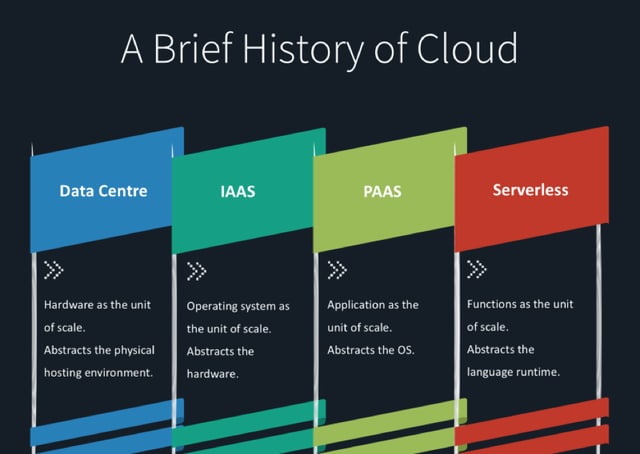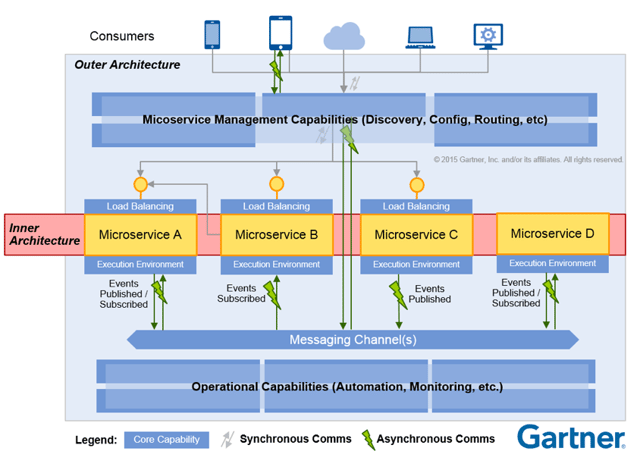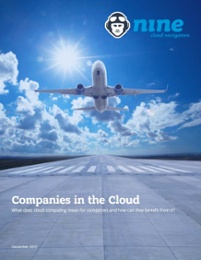The cloud isn’t just for techies anymore. It offers endless opportunities to drive business innovation, forge closer ties with customers and tap into the expertise of employees and partners. Not only recognised for its efficiency and cost savings, the cloud has also emerged as an innovation powerhouse.
Serverless computing
Serverless computing is the latest buzz word in cloud computing and one of the fastest growing cloud service delivery models.
Where are all the servers going, I hear you ask? Serverless computing doesn’t mean servers are going away, but use of dedicated servers for specific applications, functions and storage are.
Also known as Function as a Service (FaaS), it allows developers to deploy and run code on demand, without having to maintain a backend server at all. The cloud provider takes care of finding a server where the code is to run, and to scale up when necessary. It charges you for exactly what you execute, nothing more, and nothing less. For example, a CCTV camera will only record when motion is detected, send this to the cloud service and then issue an alert. There’s no point having a dedicated storage server idly waiting for that to happen, as this is also very costly.
Previously, if you were to run an app with a particular cloud provider, you would need to manage the server to ensure it’s running smoothly. There’s no longer any need to worry about building the infrastructure required to properly run the application, for example thinking about how many servers to use, storage requirements and where the servers are located. The hosting platform can dynamically work out what is needed to run the software application and designates exactly the right amount of infrastructure needed.
What’s more, set up times are much faster and hardware costs are reduced. Failover and redundancy are managed dynamically, keeping data safe and secure without the need to construct a second standby server bank.

Key features
The “pay-as-you-use” model is a core benefit to serverless computing. Customers pay a fraction of a penny every time a function is executed. That's one of the reasons why web-scale companies like Expedia and Netflix are embracing Serverless computing.
Netflix is a heavy user of AWS Lambda platform. It uses event-based triggers to automate the encoding process of media files and the validation of backup procedures. The company is also building a rule-based self-managing infrastructure that can effectively replace existing provisioning workflow.
Surprisingly, cost is not the only driving factor behind the move – IT leaders reported that benefits in time to market and quality were the top reasons to consider cloud services.
Meanwhile, security and compliance were the top reported barriers to increased public cloud adoption, and were the top considerations on the table when customers needed to select a service provider.
Hybrid infrastructure services
In order to accelerate their businesses, enterprises are implementing hybrid infrastructures, including private cloud, public cloud, managed cloud and traditional IT infrastructure. It’s no surprise that this is a favoured approach for many mid to large enterprises. The main advantage is the ability to provide infrastructure and applications in minutes, which increases agility and scalability. Other benefits include increased IT productivity, reduced costs, and a further shift of funding from a capital expense to an operating expense model.
However, the challenge of weaving a hybrid infrastructure into an existing IT environment is no mean feat; the move can be complex and risky. In my opinion, the consequences of not acting far outweigh the risks and costs of doing nothing.
According to Gartner, the growth of cloud and industrialised services and the decline of traditional data centre outsourcing (DCO) indicate a massive shift toward hybrid infrastructure services. In fact, Gartner predicts that by 2020, 90% of organisations will adopt hybrid infrastructure management capabilities.
Looking to the future
As I’m sure you would agree, the term “microservice architecture” doesn’t exactly set the pulse racing, but you will come to hear it a lot more in the cloud computing world.
To start explaining microservices, it's useful to compare it to the monolithic style. Up until the early 2000s, monolithic system development dominated the technical architecture world. In simple terms, this enabled the development of an entire large system. The monolithic software components are interconnected and interdependent and so each component, and associated components, must be present in order for code to be executed.
Eventually, these traditional monolithic systems started to get swapped by Service Oriented Architecture (SOA) systems. This is an approach used to create an architecture based upon the use of services – services carry out small functions, such as producing data, validating a customer or providing simple analytical services.
Now, it’s becoming obvious that the monolithic approached systems aren’t able to manage the increasing load and distributed system structures. Moreover, SOAs lack important features working with the Cloud, including scalability and speed to work with request changes, limiting application development.
The idea behind microservices is that some types of applications become easier to build and maintain when they are broken down into smaller, composable pieces which work together. Each component is developed separately, and the application is then simply the sum of its constituent components. This is in contrast to traditional, "monolithic" application, which is all developed in one piece.
Microservices use APIs as the main mechanism for communication and composition. These interconnections between the microservices are referred to as the inner architecture.
But microservices need to live in some sort of environment – the “outer” architecture. Ideally, it should be flexible, highly available and cost-effective, and abstracted away from many DevOps challenges. These kinds of environments are typically referred to as Platform-as-a-Service (PaaS) solutions. A PaaS allows developers to focus on the microservice creation and deployment that elastically scales based on demand.
The diagram below shows how the inner and outer architecture relate.

As you might have guessed, things are moving very quickly in cloud services, and innovation is leading the market, with increasing numbers of next-generation options being available.
Do you already know our latest whitepaper? Here, you learn, what the cloud means for your company and what it needs to migrate your application to the cloud. Practical. Informative. And super comprehensive.
Curious? Download the whitepaper now - it's completely free!
Please get in touch if you’d like to chat some more about cloud services and find out how nine can help you.





